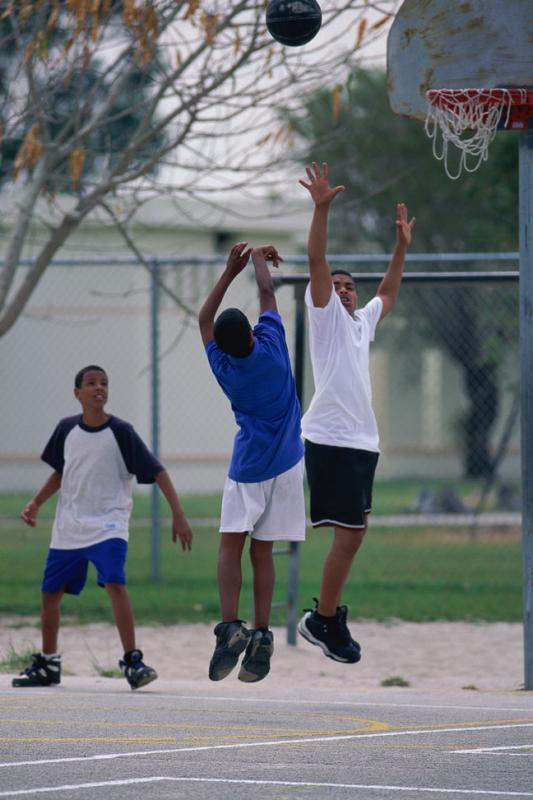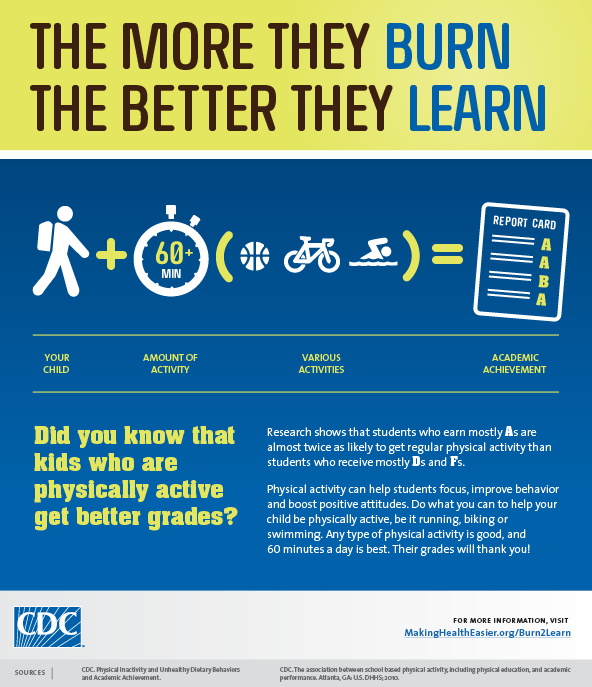Only about a quarter of youth aged 12 to 15 years get the 60 minutes per day of moderate-to-vigorous exercise recommended in the 2008 Physical Activity Guidelines, finds a new study.[1]
Based on the results of questionnaires answered by 800 youth about their activity, researchers found that 27% of boys met the guidelines compared to 22.5% of girls. The totals include activities both in school (school-based PE and gym classes) and outside of school.

More than one-half (60.2%) of boys surveyed and about one-half (49.4%) of girls engaged in moderate-to-vigorous physical activity for at least 60 minutes on 5 days or more each week. Only 7.6% did not engage in such activity on any day of the week.
Among boys who reported physical activity of any intensity in the past week, the most common activity was basketball, with about one-half (48%) of all active boys reporting that they played basketball. The second most common activity among physically active boys was running (33.5%), followed by football (27.4%).
For girls, the most common activity outside of PE and gym was running (34.9%), followed by walking (27.6%), playing basketball (21.4%), dancing (20.8%), and bike riding (18.4%)
The findings were consistent with those from other nationally representative samples of school-aged children.
"We can aim to do better than 25%," says the study's lead author, Tala Fakhouri, an epidemiologist with the National Center for Health Statistics (NCHS), a part of the Centers for Disease Control and Prevention (CDC).
The statistics are important because physical-activity behaviors track from childhood into young adulthood, and because research consistently shows that physical activity levels decline through adolescence. An earlier study by the some of the same researchers,[2] for instance, found that 70% of younger children, ages 6 to 11, met the national guidelines.
The drop in activity levels as children enter adolescence also corresponds to a time when, studies show, there is a sharp drop off in participation in organized sports, as kids fail to make school or travel teams in sports they played in elementary school, and when kids "are going through a lot of physical and emotional changes, along with increasing social distractions and academic pressures," said Michael Bergeron, executive director of the National Youth Sports Health & Safety Institute, a partnership between Sanford Health in Sioux Falls, S.D., and the American College of Sports Medicine, in an interview with USA Today.
Organized sports don't fill the gap
Though participation in youth sports contributes to overall physical activity, parents who believe that it gives them the 60 minutes of exercise they need per day may be surprised to learn that it often doesn't.
A 2010 study, [3] for instance, found that less than one fourth of youth soccer, baseball and softball players age 7 to 14 obtained the sixty minutes a day of moderate to vigorous physical exercise (MVPA) during sports practices that the guidelines recommend.
Consistent age differences were found, with 11- to 14-year-old players obtaining 7 minutes fewer of MVPA per practice than 7- to 10-year olds, with no difference by sport. Researchers viewed this finding as "unfortunate, because the decline in total physical activity is steepest in the teenage years, and decreases in activity during sports practice may contribute to this decline."
The study concluded that "youth sports practices are making a less-than-optimal contribution to the public health goals of increasing physical activity and preventing childhood obesity."
PE decline
The low rates of physical activity found in the NCHS survey may also be due, at least in part, to the declining number of children and adolescents in the United States who are getting regular exercise at school.
The statistics on P.E. are sobering:
- Only 3.8 percent of elementary schools, 7.9 percent of middle schools and 2.1 percent of high schools provide daily P.E., according to a CDC survey.
- A study published in a 2007 issue of Health Economics[4] found that daily P.E. for high school students declined from 41.6 percent in 1991 to 28.4 percent in 2003. (The survey did not have statistics for middle and elementary schools.)
- 22 percent of schools don't require kids to take any P.E.
- Nearly half -- 46 percent -- of high school students were not attending any P.E. classes when surveyed by the CDC.
Benefits of exercise well known
That regular physical activity in children and adolescents promotes health and fitness is well-established. Compared to those who are inactive, physically active youth have higher levels of cardiorespiratory fitness and stronger muscles. They also typically have lower body fatness. Their bones are stronger, and they may have reduced symptoms of anxiety and depression.

Youth who are regularly active also have a better chance of a healthy adulthood. Children and adolescents don't usually develop chronic diseases, such as heart disease, hypertension, type 2 diabetes, or osteoporosis. But the risk factors for such diseases can begin to develop early in life. Regular physical activity makes it less likely that these risk factors will develop and more likely that children will remain healthy as adults.It also has a positive effect on academic performance.[6] For instance, one recent study found that middle-school students with higher levels of physical fitness fared better on standardized tests than students who were less fit.
Play 60
Youth can achieve substantial health benefits by doing moderate- and vigorous-intensity physical activity for periods of time that add up to 60 minutes (1 hour) or more each day. This activity should include aerobic activity as well as age-appropriate muscle- and bone-strengthening activities.
Although current science is not complete, it appears that, as with adults, the total amount of physical activity is more important for achieving health benefits than is any one component (frequency, intensity, or duration) or specific mix of activities (aerobic, muscle-strengthening, bone strengthening).
Even so, bone-strengthening activities remain especially important for children and young adolescents because the greatest gains in bone mass occur during the years just before and during puberty. In addition, the majority of peak bone mass is obtained by the end of adolescence.
For more on the 2008 Physical Activity Guidelines, click here.
1. Fakhouri THI, Hughes JP, Burt VL, et al. Physical activity in U.S. youth aged 12-15 years, 2012. NCHS data brief, no. 141. Hyattsville, MD: National Center for Health Statistics, 2014.
2. Fakhouri TH, Hughes JP, Brody DJ, Kit BK, Ogden CL. Physical activity and screen-time viewing among elementary school-aged children in the United States from 2009 to 2010. JAMA Pediatr. 2013;167(3):223-229.
3. Meinhardt U, Witassek F, Petro R, Fritz C, Eiholzer U. Strength Training and Physical Activity in Boys: a Randomized Trial. Pediatrics 2013;132(6):1-7; doi:10.1542/peds.2013-1343.
4. Cawley J, Meyerhoefer C, Newhouse D. The Impact of State Physical Education Requirements on Youth Physical Activity and Overweight, Health Economics. 2007;16(12):1287-1301.
5. Löfgren B, Daly R, Nilsson J-A, Denker M, Karlsson Magnus K. An Increase in School-Based Physical Education Increases Muscle Strength in Children. Med Sci Sports Exer 2013;45(5):997-1003. DOI: 10.1249/MSS.0b013e31827c0889
6. CDC. Physical Inactivity and Unhealthy Dietary Behaviors and Academic achievement; CDC. The association between school based physical activity, including physical education, and academic performance. Atlanta, GA: U.S. DHHS; 20105








